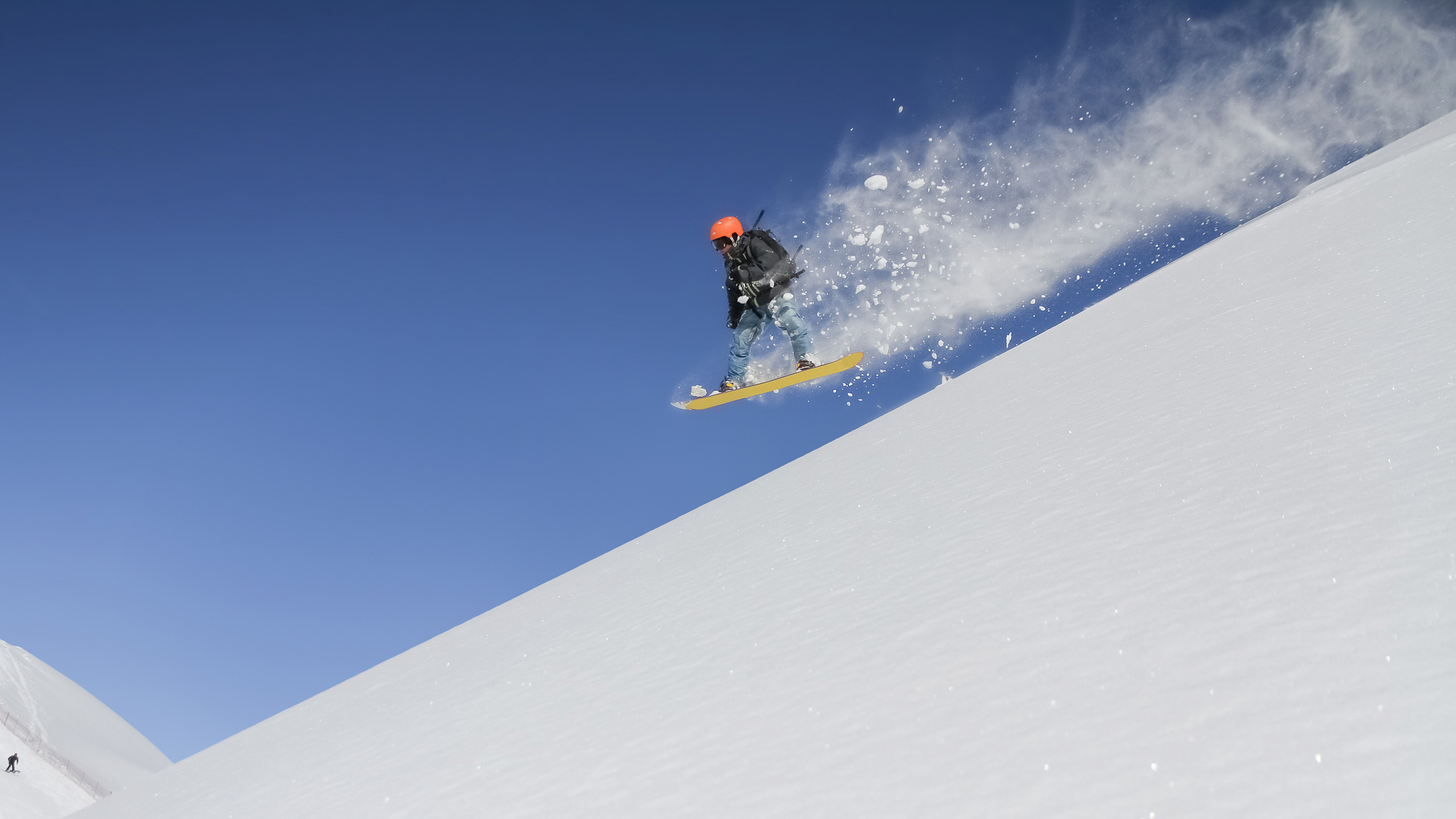Send your question to Umbra!
Q. I am a snowboarder in Ohio. I need to travel to cold, snowy mountains at least once a year to get my snowboarding fix. Should I drive my Prius or fly? And how bad is patronizing ski resorts?
Andy H.
Yellow Springs, Ohio
A. Dearest Andy,
My condolences on the mismatch between your hometown and your winter sport of choice. (Have you considered taking up cross-country skiing or ice skating? No mountains required!) My favorite cold-season activities tend more toward the knitting-next-to-the-fire-with-a-cup-of-hot-tea variety, but the skiers and snowboarders I know are quite enthusiastic about their pursuit of something called “the stoke.” So I sympathize with your desire to indulge each winter.
There is an easy answer and a hard answer to your question of car vs. plane, Andy. Not to snowflake out, but I’ll start with the easy one: neither. It would be far better for you to pack up your snowboard and hop on a train or bus to the mountains. Yes, in today’s America this option often adds time and inconvenience. But it’s also fun and romantic to ride the rails, and you’ll slash your carbon emissions. Transport options vary once you draw near your resort of choice, but many mountains run ski buses or shuttles (often free), and others can be reached directly via train or light rail.
Now, if you absolutely must drive or fly, the matter becomes more complicated. Conventional wisdom often holds that cars are preferable to planes, especially very fuel-efficient cars like yours. But new research that considered other pollutants beyond carbon dioxide and how long different gases linger in the atmosphere has recently given planes the upper hand over cars in some cases. And other studies say planes’ fuel efficiency gains have outpaced that of automobiles.
I tried to ride this slippery slope with a few travel emissions calculators (this one and this one) to estimate the greenhouse-gas cost of a trip from Yellow Springs to Denver, and each one gave me a different winner. But if you were to ride the slopes closer to home — a ski resort in the Alleghenies of West Virginia, say — the calculators give the clear advantage to driving. (And it’s even better if you load up the Prius with three other snowboarders and carpool.) That’s because planes use the most fuel on takeoff and landing, making shorter flights particularly inefficient.
(Lest you get the wrong idea, while I gather snowboarders tend to have rather strong opinions about the quality of the snow and the mountains in the East versus the West, I must point out that traveling fewer miles means fewer emissions.)
As to your other question, Andy, I’m not sure I can tell you how bad or good it is to visit a ski resort. Like any leisure industry, winter sports have an environmental impact. But some resorts have put much more effort into greening their operations than others, and it’s a great idea to support the ones that have demonstrated a commitment to lightening their footprints.
A group called the Ski Area Citizens Coalition evaluates and grades resorts based on a number of factors, including habitat protection (not expanding into virgin terrain and safeguarding wildlife), protecting watersheds and conserving water, addressing climate change through renewable energy generation and efficiency, and environmental policies. While some ski resorts poo-poo their methods, it’s still useful to peruse their clearinghouse. The National Ski Areas Association also runs a Climate Challenge program that spotlights resorts taking action to lessen their impacts.
There are a few eco-issues of particular note with ski areas. One is how the runs are constructed: Graded (or bulldozed) runs are more damaging than cleared runs because they scrape topsoil and vegetation off the mountain, a significant ecological impact (the Ski Area Citizens Coalition includes this in its ratings). Another is artificial snowmaking, an energy-intensive, water-sucking practice that may affect the landscape year-round – and one that resorts are using more and more, as climate change reduces snowpack in our mountains.
Speaking of climate change, you and your snow-loving brethren are in a unique position to appreciate what’s at stake as the world warms. As our own Greg Hanscom points out, the ski and snowboard community has a lot to lose as climate change steals our snow. Groups like Protect Our Winters and Ride Greener organize political action and agitate for environmentally friendly practices in the industry. I’d encourage any concerned snowboarder (that’s you, Andy) to get involved. What a treat to see your climate concerns snowball into some meaningful change.
Shreddingly,
Umbra



